Chloramine-T
- CAS NO.:127-65-1
- Empirical Formula: C7H7ClNNaO2S
- Molecular Weight: 227.64
- MDL number: MFCD00000522
- EINECS: 204-854-7
- SAFETY DATA SHEET (SDS)
- Update Date: 2024-12-18 14:15:30

What is Chloramine-T?
Description
Chloramine-T, the sodium salt of?N-chloro-p-toluenesulfonamide, is an antibacterial agent and disinfectant that has been in use for more than a century. Its synthesis was first reported by F. D. Chattaway in 1905. In water, chloramine-T decomposes to release active chlorine, which acts as a biocide. The sulfonamide moiety’s action is similar to that of sulfa drugs.
Description
The sodium salt of p-toluenesulfochloramide, commonly known as chloramine-T, exerts strong oxidizing action in both acidic and alkaline media and thus has been widely used for the oxidimetric determination of a large number of inorganic and organic substances.
Oxidation of some aldehydes by chloramine-T has been reported to occur quantitatively in an alkaline solution, giving the corresponding acid as the end product. Both direct and indirect methods have been carried out to estimate aldehydes by chloramine-T. Chloramine-T (CAT) is also commonly used in radiolabeling bioactive molecules by halogenation. CAT is used to release radioactive elemental iodine by oxidation of its salts. Unfortunately, CAT is a strong oxidizing agent and can cause significant damage to peptides and proteins. This may lower the yield of the iodination reaction and may produce undesirable side products[1-2].
Chemical properties
white or yellow powder with a chlorine-like odour
The Uses of Chloramine-T
This disinfectant is for external use only, it can exterminate bacteria, viruses, fungi, spore. The action principle is that chlorine can sterilize slowly and lastingly, and also can dissolve necrotic tissue, chlorine come from hypochlorous acid which is produced by Chloramine-T solution. Apply to disinfect drinking water container,food,all kind of tableware, fruits and vegetables,and cleaning wound, mucous membrane.
The Uses of Chloramine-T
antiseptic, disinfestant, antiproliferative
The Uses of Chloramine-T
sterilizer, antiseptic, disinfectant, and chemical reagent in the medical and pharmaceutical fields.
Definition
ChEBI: An organic sodium salt derivative of toluene-4-sulfonamide with a chloro substituent in place of an amino hydrogen.
Flammability and Explosibility
Not classified
Safety Profile
Poison by parenteral and intravenous routes. Human mutagenic data reported. When heated to decomposition it emits toxic fumes of Cl-, SOx, Na2O, and NOx. See also SULFONATES and CHLORIDES.
Synthesis
Chloramine-T is prepared
in 75 – 95 % yield by passing chlorine into a
sodium hydroxide solution of p-toluenesulfonamide. It is a strong electrolyte in acid
solution and a good oxidizing agent in base. It is
fairly soluble in water, and practically insoluble
in benzene, chloroform, and ether. The compound reacts readily with mustard gas to yield
a harmless crystalline sulfimide; chloramine-T
derivatives are being studied as protective agents
against poison gas.
References
[1] M. C. Agrawal, S. P. Mushran. "Mechanism of Oxidation of some Aliphatic Aldehydes by Chloramine-T." Zeitschrift für Naturforschung B 20 1 (1972): 401–404.
[2] B M Tashtoush. "Chloramine-T in radiolabeling techniques. IV. Penta-O-acetyl-N-chloro-N-methylglucamine as an oxidizing agent in radiolabelling techniques." Analytical biochemistry 288 1 (2001): 16–21.
Properties of Chloramine-T
| Melting point: | 167-170 °C(lit.) |
| Density | 1.401[at 20℃] |
| vapor pressure | 0Pa at 25℃ |
| storage temp. | Sealed in dry,2-8°C |
| solubility | H2O: >100 mg/mL |
| pka | 0.39[at 20 ℃] |
| form | Solid |
| color | White to off-white |
| Water Solubility | 150g/L at 25℃ |
| Stability: | Stable. Incompatible with strong oxidizing agents. May decompose violently if heated above 130 C. May decompose on exposure to air. |
| InChI | InChI=1S/C7H7ClNO2S.Na/c1-6-2-4-7(5-3-6)12(10,11)9-8;/h2-5H,1H3;/q-1;+1 |
| CAS DataBase Reference | 127-65-1(CAS DataBase Reference) |
| EPA Substance Registry System | Chloramine T (127-65-1) |
Safety information for Chloramine-T
| Signal word | Warning |
| Pictogram(s) |
 Exclamation Mark Irritant GHS07 |
| GHS Hazard Statements |
H315:Skin corrosion/irritation H319:Serious eye damage/eye irritation |
| Precautionary Statement Codes |
P264:Wash hands thoroughly after handling. P264:Wash skin thouroughly after handling. P280:Wear protective gloves/protective clothing/eye protection/face protection. P302+P352:IF ON SKIN: wash with plenty of soap and water. P305+P351+P338:IF IN EYES: Rinse cautiously with water for several minutes. Remove contact lenses, if present and easy to do. Continuerinsing. P332+P313:IF SKIN irritation occurs: Get medical advice/attention. P337+P313:IF eye irritation persists: Get medical advice/attention. |
Computed Descriptors for Chloramine-T
| InChIKey | VDQQXEISLMTGAB-UHFFFAOYSA-N |
| SMILES | S(=O)(=O)(N(Cl)[Na])C1C=CC(C)=CC=1 |
Chloramine-T manufacturer
Vijaya Pharma And Life Science
New Products
(S)-3-Aminobutanenitrile hydrochloride 4-Methylphenylacetic acid N-Boc-D-alaninol N-BOC-D/L-ALANINOL Tert-butyl bis(2-chloroethyl)carbamate 3-Morpholino-1-(4-nitrophenyl)-5,6-dihydropyridin- 2(1H)-one Furan-2,5-Dicarboxylic Acid Tropic acid 1-Bromo-3,5-Di-Tert-Butylbenzene S-2-CHLORO PROPIONIC ACID ETHYL ISOCYANOACETATE 2-Bromo-1,3-Bis(Dimethylamino)Trimethinium Hexafluorophosphate 4-IODO BENZOIC ACID 3-NITRO-2-METHYL ANILINE 1-(2,4-DICHLOROPHENYL) ETHANAMINE (2-Hydroxyphenyl)acetonitrile 4-Bromopyrazole 2-(Cyanocyclohexyl)acetic acid 4-methoxy-3,5-dinitropyridine 1-(4-(aminomethyl)benzyl)urea hydrochloride 2-aminopropyl benzoate hydrochloride diethyl 2-(2-((tertbutoxycarbonyl)amino) ethyl)malonate tert-butyl 4- (ureidomethyl)benzylcarbamate Ethyl-2-chloro((4-methoxyphenyl)hydrazono)acetateRelated products of tetrahydrofuran
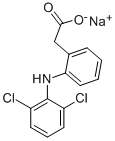
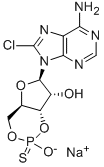
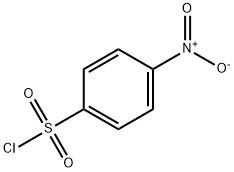
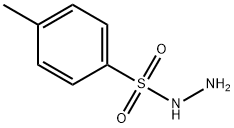
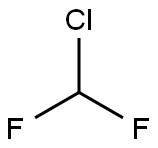
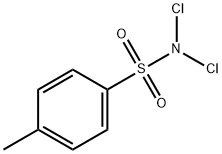
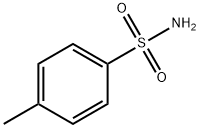

You may like
-
 Chloramine -T 99%View Details
Chloramine -T 99%View Details -
 127-65-1 99%View Details
127-65-1 99%View Details
127-65-1 -
 Chloramine-T 99%View Details
Chloramine-T 99%View Details
127-65-1 -
 127-65-1 Chloramine-T 98%View Details
127-65-1 Chloramine-T 98%View Details
127-65-1 -
 AKTIVIN CAS 127-65-1View Details
AKTIVIN CAS 127-65-1View Details
127-65-1 -
 1975-50-4 98%View Details
1975-50-4 98%View Details
1975-50-4 -
 14714-50-2 (2-Hydroxyphenyl)acetonitrile 98+View Details
14714-50-2 (2-Hydroxyphenyl)acetonitrile 98+View Details
14714-50-2 -
 118753-70-1 98+View Details
118753-70-1 98+View Details
118753-70-1